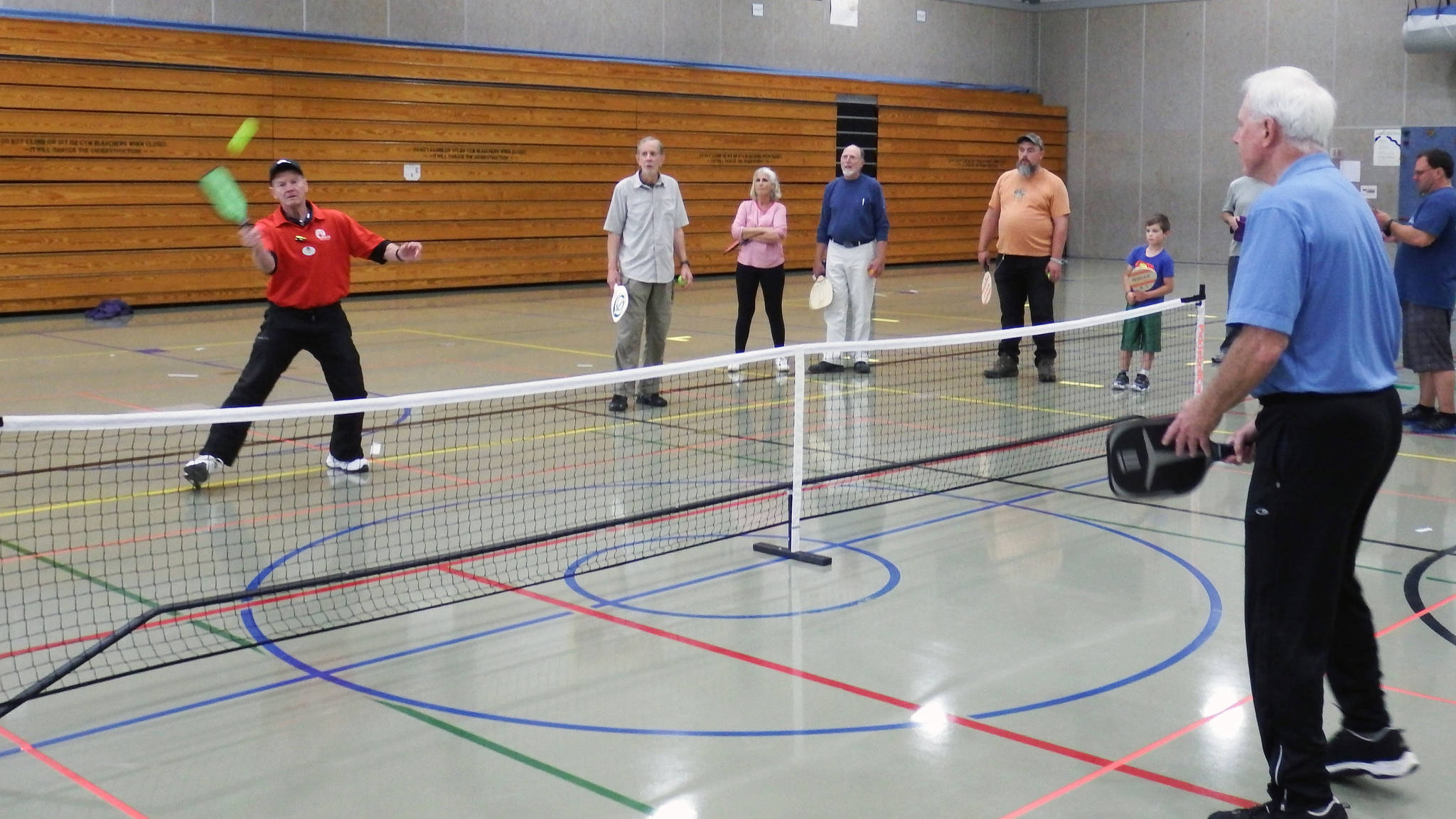Juneau resident Susan Warner is on a mission to make pickleball a regular pastime for the baby boomers of Juneau.
“Baby boomers pride themselves on their active lifestyles, but many sports that we’ve played all of our lives are doing a bit of damage to our joints and muscles,” Warner said.
“Pickleball is a very active competitive game, good for cardio, balance, reaction time, and hand-eye coordination, but the pickleball racket is short and the ball is lightweight, so swinging at the ball puts a lot less stress on your joints than swinging at a tennis ball, softball, or volleyball.”
Warner said she first heard of the sport 10 years ago when she was taking tennis lessons and someone pulled out some pickleball equipment and showed her the game.
“We didn’t play for very long, but I knew it was a game I would want to play more of. I kept my ear out for the sport and saw that is was getting more and more popular in the entire world, but I never heard of anyone starting the game in Juneau,” said Warner.
In Warner’s quest to bring pickleball to the capital city, she met certified personal trainer Barney Norwick, who at 73 heads south to Arizona for the winter and plays a lot of the sport.
Over the past month, Norwick has been teaching Warner and a small group how to play the sport at the covered areas of the Mendenhall River School and Dzantik’i Heeni Middle School.
“The main challenge in Juneau is finding a regular place to play that is accessible to everyone,” said Warner. “Juneau does not have a public recreation center like so many communities, and that might be why Ketchikan, Soldotna, and other communities in Alaska are way ahead of us in this sport. We have so many school gyms, but the kids have priority.”
Warner explained that gymnasiums are not the only place pickleball games can be held, but merely anywhere large enough. A pickleball court is approximately one-third the size of a regular tennis court, and is laid out according to the dimensions of a badminton court or 20 feet by 44 feet, according to the USA Pickleball Association.
“Folks can play in a large driveway or a church dining room,” she said.
One of the best qualities about Pickleball, according to Norwick, is its simplicity.
“Pickleball is a sport you can go out and practice a couple times, then are ready to actually go and play and have fun,” he said.
This statement held true for local Mary Anne Slemmons, who played Pickleball just once but loved it.
“It’s a really good workout but with less risk of injury than tennis or racquetball. Unlike other court games where you make a reservation for an hour and leave, you can show up and drift in and out of games over a period of several hours,” Slemmons said.
Warner said she hopes Juneau’s population of those 50 years old and older — which is 11,216 people, according to 2016 Population Estimate from the Department of Labour and Workforce Research and Analysis — will enjoy giving pickleball a try.
“I feel that young people have many sports and opportunities for activities in Juneau, and it is time to focus on the needs of our growing senior population,” said Warner.
For more information on pickleball in Juneau contact Susan Warner at 957-6011 or Barney Norwick at barneynorwick@gmail.com.
Pickleball: How to play
The International Federation of Pickleball Official Tournament Rulebook outlines the game as follows:
Although Pickleball is played in a court, the rules of the game more closely resemble table tennis or badminton than traditional tennis, according to the International Federation of Pickleball.
The game begins with one side serving the pickleball. Using the wood or composite paddle, which is just larger than a ping pong paddle, the player hits the light, plastic, hole-covered whiffle ball pickleball over the net.
To properly serve the ball, the player must keep one foot behind the back line and strike the ball with an underhand swing, aiming at the service court located diagonally over the net, and clearing the no-volley zone. Service starts from the right hand court. Only one fault is allowed. In the case of doubles, both players get to serve once, and then the serve is taken over by the opposing player/team.
Both sides must allow the pickleball to bounce first before hitting it with the paddle at least one time from the start of the game. Thereafter, players may hit it without allowing it to bounce, or volley, provided they are not within the no-volley zone which lies 7 feet of the net, marked on the court.
The main reason for the no-volley zone is to take away opportunities for smash volleys or drop shots, making the game more reliant on careful placement of shots. Of course, the rule also creates opportunities for the other side to fault.
A player or team scores points only when they are serving. A pickleball game is played to 11 points and a win must be by 2 points.
Similar to tennis “faults” in the game of pickleball, cause a loss of a point. Faults include failing to clear the net, hitting the ball out of bounds, volleying the ball from within, or while a foot is in the no-volley zone, or volleying the ball before it has bounced on a first serve or first return.
• Erin Laughlin is a student journalist at the University of Alaska Southeast, and she can be reached at laugerin@me.com.

